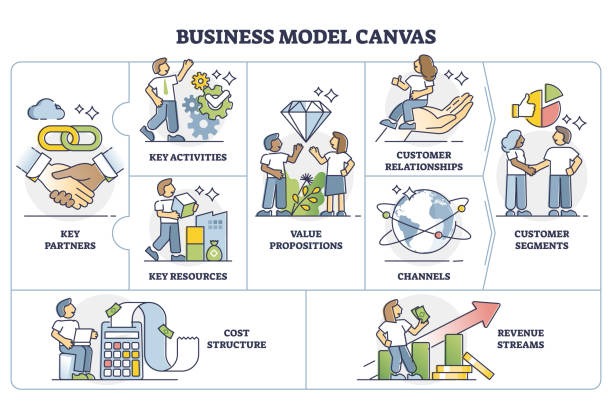In today’s fast-evolving digital economy, choosing the right business model is crucial to launching a successful venture. From subscription services to marketplaces, modern entrepreneurs have a wide range of scalable, flexible, and profitable models to choose from. Here are 10 proven business models every entrepreneur should consider in 2025.
1. Subscription-Based Model
Overview: Customers pay a recurring fee—monthly, quarterly, or annually—for continued access to a product or service.
Examples: Netflix, Spotify, Dollar Shave Club, Adobe Creative Cloud
Why It Works: Predictable revenue, high customer retention, and easier scaling through upselling and personalization.
2. Freemium Model
Overview: Offer a basic version of the product for free, while charging for advanced features or premium access.
Examples: Canva, Zoom, Dropbox
Why It Works: Attracts a large user base with free access and converts loyal users into paying customers through value-added services.
3. E-commerce (Direct-to-Consumer)
Overview: Sell physical or digital products directly through an online store.
Examples: Warby Parker, Gymshark, Allbirds
Why It Works: Cuts out middlemen, enables strong brand control, and uses data to optimize marketing and logistics.
4. Marketplace Model
Overview: Create a platform where buyers and sellers transact, and earn a commission or listing fee.
Examples: Amazon, Etsy, Airbnb, Fiverr
Why It Works: Scales rapidly without managing inventory, and leverages network effects for exponential growth.
5. On-Demand Services
Overview: Provide services instantly or with minimal delay through app or web platforms.
Examples: Uber, DoorDash, UrbanClap
Why It Works: Solves immediate needs, encourages repeat usage, and uses tech to optimize delivery and logistics.
6. Affiliate Marketing
Overview: Earn commissions by promoting other companies’ products or services via content or referrals.
Examples: Bloggers, YouTubers, comparison sites
Why It Works: Low upfront cost, passive income potential, and highly scalable through SEO and influencer networks.
7. SaaS (Software as a Service)
Overview: Deliver software via the cloud on a subscription basis.
Examples: Salesforce, Slack, HubSpot
Why It Works: High profit margins, recurring revenue, and easy updates or feature additions via the cloud.
8. Franchise Model
Overview: Expand a brand by allowing others to operate under your established business system for a fee.
Examples: McDonald’s, Anytime Fitness, Subway
Why It Works: Rapid expansion using others’ capital while maintaining centralized brand control and revenue streams.
9. Coaching or Online Courses
Overview: Sell your expertise in the form of courses, webinars, or one-on-one coaching sessions.
Examples: Udemy instructors, business coaches, niche educators
Why It Works: High-profit margins, scalable through recorded content, and strong demand in niche learning segments.
10. Productized Services
Overview: Offer standardized services with fixed pricing, scope, and delivery timeline—like a product.
Examples: Design Pickle (graphic design), WP Buffs (WordPress support)
Why It Works: Simplifies sales and operations, reduces custom client work, and enables automation and delegation.
Final Thoughts
Choosing the right business model depends on your goals, resources, skills, and target audience. Whether you want predictable income (subscription), scalability (marketplace), or flexibility (affiliate or coaching), these 10 proven models provide a strong foundation for building a sustainable, modern business.
Entrepreneurs who understand and align their business model with market demand are better positioned to innovate, grow, and thrive in today’s competitive landscape.





Leave a Reply